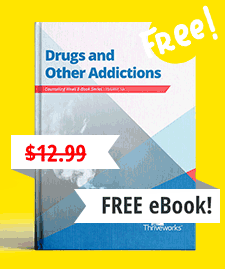
According to the Diagnostic and Statistical Manual, Fifth Edition (DSM-5), posttraumatic stress disorder (PTSD) is essentially characterized by the development of certain symptoms following exposure to a traumatic event. The appearance of PTSD varies among different individuals: some mainly experience fear-based emotional and behavioral symptoms, while others enter dysphoric mood states; and some individuals may develop arousal and reactive-externalizing symptoms, while others primarily experience dissociative symptoms. It is also possible for an individual to have a combination of these symptoms.
Diagnostic Criteria for Posttraumatic Stress Disorder DSM-5 309.81 (F43.10)
The following criteria (as applied to adults, adolescents, and children older than 6 years) as outlined in the DSM-5 must be met in order for a posttraumatic stress disorder diagnosis to be made:
- The individual was exposed to actual or threatened death, serious injury, or sexual violence in at least one of the following ways:
-
- He or she was a victim of the traumatic event.
- He or she witnessed, in person, the event as it happened to others.
- The individual learned the traumatic event happened to a close family member or friend. When it comes to actual or threatened death of a close family members or friends, the events must have occurred violently or accidentally.
- He or she experienced repeated or severe exposure to harsh details of the traumatic exposure. For example, EMT’s finding dead bodies or collecting human remains.
- The individual experiences at least one of the following intrusion symptoms associated with the traumatic event, beginning after the traumatic event occurred:
- Recurrent and involuntary distressing memories of the traumatic event that intrude his or her mind. (Note: In children older than 6 years old, repetitive play or games may involve themes of the traumatic event(s) they experienced.)
- Recurrent distressing dreams involving the traumatic event. (Note: Children may simply have scary dreams without related or recognizable content.)
- Dissociative reactions, such as flashbacks, where the individual feels or acts as if the traumatic event were occurring again.
- Intense or prolonged psychological distress when exposed to cues that symbolize or resemble the traumatic event.
- Strong physiological reactions to the aforementioned cues.
- The individual goes out of his or her way to avoid stimuli associated with the traumatic event, as demonstrated by at least one of the following:
- He or she puts in an effort to avoid distressing thoughts, feelings, and memories associated with the traumatic event.
- He or she puts in an effort to avoid external reminders—people, conversations, situations, places—that bring about distressing thoughts, feelings, and memories associated with the traumatic event.
- The individual experiences negative alterations in thoughts and moods associated with the traumatic event, beginning or worsening after the event occurred, as demonstrated by at least two of the following:
- An inability to remember important aspects of the traumatic occurrence, usually due to factors like amnesia, head injury, or alcohol
- Persistent and exaggerated negative beliefs or expectations.
- Persistent distorted thoughts and views about the causes as well as consequences of the traumatic event that result in self-blame.
- Persistent negative emotional state, such as fear or anger.
- A diminished interest or involvement in significant activities.
- Feelings of detachment from others or estrangement from loved ones.
- Persistent inability to experience positive emotions, like happiness, love, and fulfillment.
- The individual has marked alterations in arousal and reactivity associated with the traumatic event, which begins or worsens after the event occurred, as proven by at least two of the following:
- Angry outburst and irritable behavior, which is typically expressed verbally or physically toward other people or objects
- Reckless, careless, or self-destructive behavior
- Hypervigilance
- An excessive startle response
- Difficulty concentrating
- Sleep disturbance, which may involve difficulty falling or staying asleep
- The disturbance lasts longer than 1 month.
- The disturbance causes clinically significant distress and/or impairment in normal areas of functioning.
- The disturbance cannot be attributed to the physiological effects of a substance or another medical condition.
It’s important to specify whether the posttraumatic stress disorder is…
…with dissociative symptoms, which means the individual has symptoms that meet the criteria for the disorder and experiences persistent or recurrent symptoms of either of the following in response to the stress:
- Depersonalization: The individual consistently feels detached from his or her body or mind (e.g., feels like they’re in a dream, or time is moving in slow motion).
- Derealization: He or she feels like his or her surroundings aren’t real (e.g., the world around the individual appears distorted or unreal)
…with delayed expression, which is where the individual does not meet full criteria until at least 6 months after the traumatic event occurred.
Prevalence of Posttraumatic Stress Disorder DSM-5 309.81 (F43.10)
Rates of PTSD are, unsurprisingly, higher among veterans, firefighters, cops, etc., who are more likely to or more often experience traumatic events. The highest rates are found among survivors of rape, captivity, military combat, and genocide. PTSD symptoms may vary across development, as children and adolescents generally display lower prevalence following exposure to traumatic events. However, PTSD can occur at any time and at any age, with symptoms typically beginning within the first 3 months of the trauma.
Treatment for Posttraumatic Stress Disorder
Individuals suffering from posttraumatic stress disorder have a few effective treatment options. These include:
- Cognitive behavioral therapy, which helps individuals understand thoughts and beliefs that may be harmful to them.
- Exposure therapy, which helps individuals face the traumatic event and situations related to the event that they find frightening and come up with ways to cope.
- Medication, which is used to help improve symptoms of PTSD. Antidepressants, anti-anxiety medications, and prazosin are all used by PTSD sufferers.
Let’s keep in touch! Sign up to receive our newsletter:
Start a Relationship with An Exceptional Counselor
- Skilled and caring professional counselors
- Accepting all major and most insurances
- High-touch customer service & premium benefits
- Same- or next-day appointments
- Ultra-flexible 23.5hr cancellations













